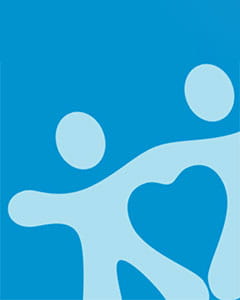Q & A on Scoliosis with Dr. Herrera and Dr. Knapp, Pediatric Orthopedic Physicians at Arnold Palmer Hospital
Scoliosis is a relatively common condition among children and adolescents. It’s important to know that no spine is perfectly flat, but those who are unaffected by scoliosis have a spine that is straight when looking up and down the middle of the back. Likewise, those who are affected by scoliosis have a curve that runs side-to-side, sometimes resembling the letters “S” or “C,” instead of the letter “I.”
What exactly is scoliosis and how common is it?
Scoliosis is a condition of the spine where your back may become curved with time. Not only is the spine curved, but it also rotates on its axis, which leads to the famous “rib hump,” noticed on the spine screenings done at school, or during yearly physicals administered by primary care physicians.Scoliosis affects roughly 10 percent of the population. Fortunately, most of these people have curves that are mild to insignificant, and will not cause problems or progression in the future. Out of those who are affected by scoliosis, only about 10 percent will require either bracing or surgery.
What are the symptoms of scoliosis?
Most of the time, there are no symptoms associated with scoliosis. It is usually detected by your child’s pediatrician on a forward bending test during the annual checkups, or by the school nurse. Occasionally, parents are the ones that notice the curvature of the spine. Some patients may also have associated back pain. Fortunately, scoliosis is usually not the actual cause of pain, and is mostly related to stiffness and inactivity.How is scoliosis treated? When is surgery necessary?
Scoliosis is treated in several different ways. Braces are commonly used in children with moderate curves. Surgery is sometimes the preferred method in those with severe curves, or those with rapidly progressive curves.It is commonly thought that exercises such as stretching and strengthening, or other modalities (chiropractic manipulation), can actually treat and improve a child’s scoliosis. However, these methods have not been shown to be effective. That said, for those with mild scoliosis, flexibility and strengthening exercises are encouraged as a means to maintain core balance and bone mass.
Here are some common questions asked by parents whose child has already been diagnosed with scoliosis.
Does my child’s bad posture cause the scoliosis?
No, bad posture does not cause scoliosis. In fact, the scoliosis may be the reason for your child’s bad posture, especially if he or she leans to one side.Will the metal detectors go off in airport security after my child has rods placed in his or her spine?
This depends on how sensitive the detector is, but typically, this does not happen. However, a letter from your family’s primary care physician explaining your child’s implants may be helpful to have on hand. Your child may also need to show the healed incision on his or her back in the rare event that the detector goes off.Will having scoliosis affect my daughter’s ability to bear and deliver a child?
No, it shouldn’t. There have been many studies done on scoliosis and pregnancy, and none have shown difficulties in childbearing in women with scoliosis. Additionally, pregnancy does not typically cause a significant increase in the degree of scoliosis in an unfused spine.Does having scoliosis make my child more prone to osteoporosis?
No, scoliosis does not lead to osteoporosis as an adult.Can children with scoliosis exercise? Are there any exercises that are off-limits?
My recommendation to any patient with scoliosis is to live a normal life as possible within their condition. We encourage many exercise techniques, such as yoga and Pilates, to help stretch and maintain flexibility to the spine. These types of exercises also strengthen the core muscles (those in the abdomen and lower back) to maintain and increase stability and balance.It is important for athletes to stretch before and after exercise to maintain and improve flexibility, and to work on their core muscles to help prevent pain. There are no restrictions as to the type of sport your child with scoliosis can participate in, so encourage him or her to participate in a variety of activities to find the ones they are most interested in!
If you think your child might have scoliosis, consult with your family pediatrician. Once the condition is diagnosed, it is likely that your child will be referred to a pediatric orthopedic specialist for a thorough evaluation and a follow-up course of action in order to best treat your child’s scoliosis.







